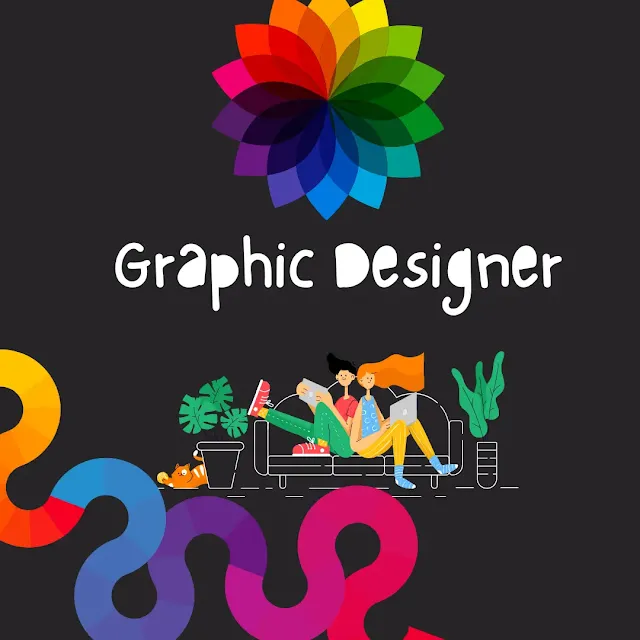Graphic Design
GRAPHIC DESIGN has never been more important in a world where visual stimuli, pictures, and graphics are everywhere. Everywhere we look, from the logo on our morning coffee cup to the billboards, we drive past on our way to work, visual design shapes our thoughts and influences our choices.
However, what is GRAPHIC design precisely, and why is it important? Come along as we delve into the fascinating field of visual design and discover the potency of visual storytelling.
What is Graphic Design?
Basically, graphic design is the art of skillfully fusing text, pictures, and other visual components to convey ideas. It is a combination of creativity and usefulness, a combination of purpose and beauty. visual designers use a variety of design concepts, instruments, and methods to produce POSTERS, websites, and logos, among other things.
The History of Graphic Design: An Overview
We need to go back in time to the beginnings of graphic DESIGN to comprehend its fundamentals. Although the use of symbols and pictures in communication dates back to ancient civilizations, visual layout really started to take shape in the 15th century with the invention of printing presses. Early innovators like Johannes Gutenberg transformed communication by fusing text and images to produce more powerful messages.
The Importance of Graphic Design
Our daily activities depend strongly on graphic design, frequently without our awareness. Why it matters is as follows:
First Impressions:
A brand's website or product packaging is frequently the first points of contact an audience has with it. A well-designed brochure or LOGO may make an impression that lasts and communicates professionalism, dependability, and reliability.
Brand Identity:
Communication :
User Experience (UX):
In the DIGITAL era, UX is critical. To create user-friendly, aesthetically pleasing interfaces that improve user experience and increase engagement, visual designers are essential. Every encounter, from mobile applications to WEBSITE DESIGN, is thoughtfully created to satisfy consumers and entice them to return.
Driving Engagement and Conversions:
In a time when people's attention is in short supply, engaging images are crucial to attracting and holding the interest of an audience. Whether it's through engaging email updates, attractive SOCIAL MEDIA visuals, or immersive multimedia experiences, visual creation is essential for increasing engagement and conversion rates. Through the development of visually striking content that speaks to their intended audience, companies may draw in customers, motivate action, and eventually boost sales.
The Elements of Graphic Design
The field of graphic creation is wide and includes many different components, such as:
TYPOGRAPHY: is the skill of placing fonts to enhance the readability, legibility , and aesthetic appeal of written material.
Color: Color is important in graphic making because it can create feelings , transmit meaning, and establish visual hierarchy .
Layout: The placement of text, pictures , and other components on a page or screen with an emphasis on balance, structure , and visual flow is known as Layout.
Image and Illustrations: Visual components that improve the overall design and successfully convey messages, such as pictures, illustrations, ICONES , and graphics .
Evolution and Adaptation: Graphic Design's Shifting Face
Like society, visual design changed with time. From the bold modernist movement of the early 20th century to the Bauhaus school's minimalist ideology, each period produced new fashions and ideologies that influenced the visual language of the day. The late 20th-century digital revolution further changed the game by providing designers with unprecedented tools and methods to express their ideas.
Technology and Art at Their Intersection:
Tools of the Trade A wide variety of tools and technology that enable designers to realize their ideals are at the core of graphic making. These tools, which range from advanced digital tablets and styluses to industry-standard programs like ADOBE PHOTOSHOP and Illustrator, act as the modern designer's paintbrushes and CANVASES, enabling them to manipulate images, play around with typography, and create immersive visual experiences with dexterity and grace.
Design Principles: guiding Lights in a Sea of Creative thinking
Every masterpiece is built around a set of fundamental principles that apply to composition, color theory, typography, and other aspects of design, even if the CREATIVE process is infinite. Whether it is the arrangement of information in a poster, the harmony of colors in a palette, or the balance of elements in a LAYOUT, these rules lead designers through the wide sea of creative options and help them make well-informed decisions that connect with their audience.
Beyond the Aesthetics: The Communicative Value of Graphic Design
While graphic design is frequently praised for its aesthetic value, its actual strength resides in its capacity to communicate IDEAS, elicit emotions, and motivate action. From the engaging appeal of an advertising campaign to the intuitive user experience on a website, VISUAL acts as a bridge between brands and their audience, creating and providing connections they participate in a very crowded market
Rising Visual Branding: Making Art in a Digital World
In an age where attention is fleeting and competition fierce, the importance of a strong visual brand cannot be overstated. A well-designed logo, complementary colors, and distinctive visual language are not just decorative elements; They are products that build brand identity, help businesses stand out in a crowded marketplace, and CREAT meaningful connections with their target audience.
Conclusion
In summary, visual design is about more than simply making things seem nice; it's also about finding solutions to issues, conveying concepts, and building deep relationships. Graphic design is the foundation of visual communication in the modern world, whether you're making a website for a multinational corporation, a brochure for a client, or a logo for a startup. Thus, the next time you see a masterfully created poster or a well-thought-out website, stop to admire the creativity and talent that went into it. You might even want to EXPLORE the fascinating field of graphic design further.






0 Comments